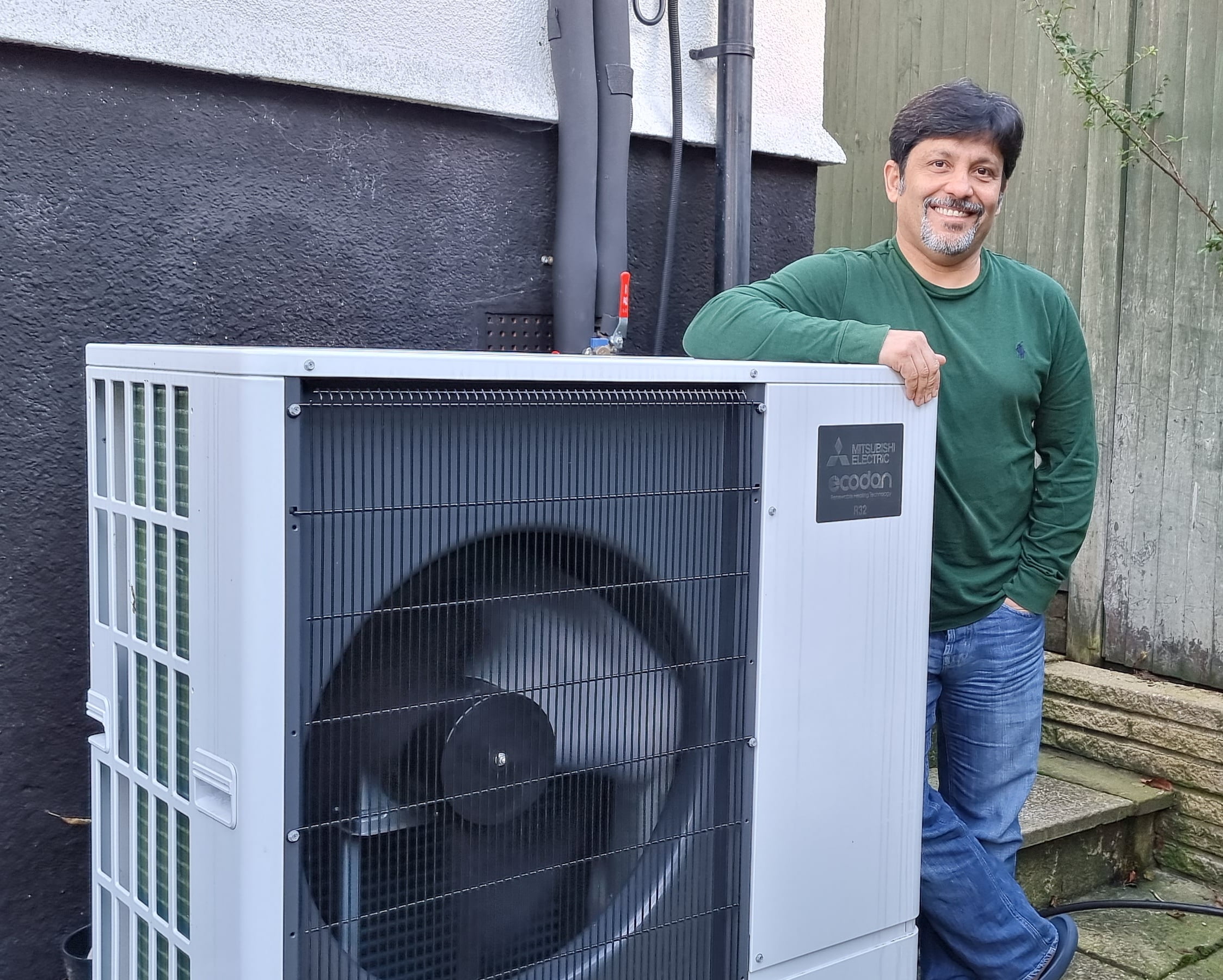The family’s new heat pump should be over 300% more efficient* than their old gas boiler.
It will reduce their heating carbon dioxide (CO2) emissions by about 80%*. This is equivalent to having three less cars on the road each year.
At the moment it is likely that the heat pump cost more to run than the family’s old gas boiler, depending on which electricity tariff they use. However, the heat pump will become more cost-effective to run in future if levies and obligations are adjusted to make electricity less expensive relative to gas.
*Assumptions: annual heating demand of 25,000kWh; average heat pump SPF of 2.64; gas boiler efficiency of 84%; mains gas carbon emissions 0.21kg CO2e per kWh; electricity carbon emissions of 0.136kg CO2e per kWh; vehicle emissions of 225g CO2e per mile; average driving distance of 7,400 miles per year.
This case study is part of a series produced as part of a UK Government funded project through its Energy Innovation Programme, the Electrification of Heat Demonstration project. The project is trialling different types of heat pumps in up to 750 homes across the UK.






